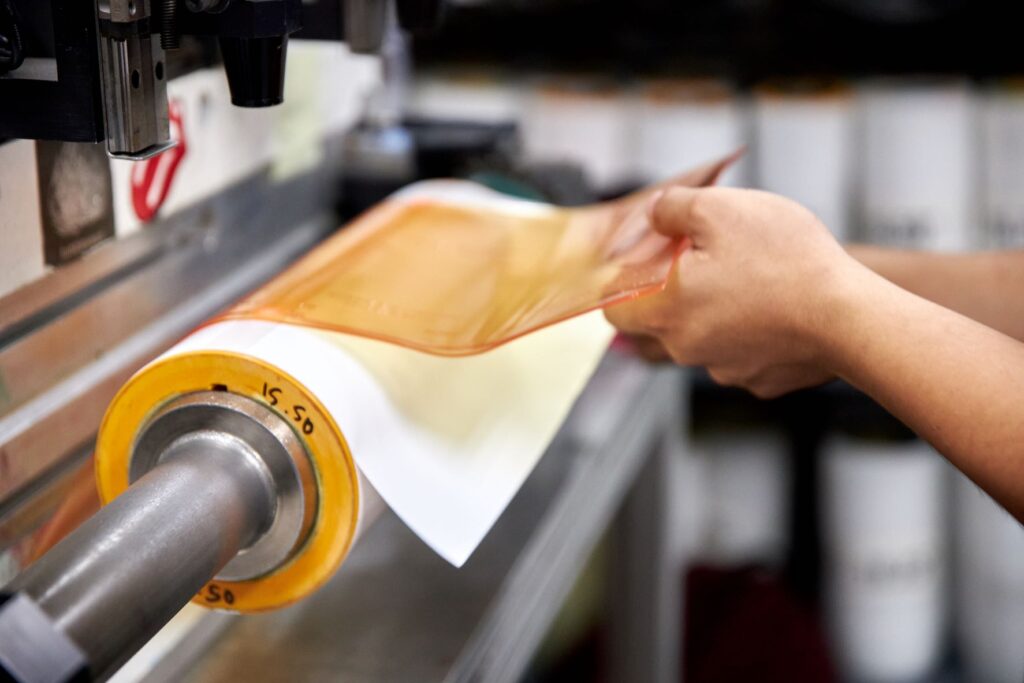In the dynamic world of printing, flexography stands out as a versatile and efficient method for producing high-quality prints on diverse materials. Central to achieving optimal results in flexography is the concept of trapping techniques. These techniques are essential for ensuring that colors align perfectly, preventing any unwanted gaps or overlaps. If you’re a marketing professional or involved in the printing industry, understanding these techniques can significantly enhance the quality of your printed materials.

What is Flexography?
Flexography, often referred to as flexo printing, is a modern printing process that utilizes flexible relief plates. This method is popular for its ability to print on almost any type of substrate, including plastic, metallic films, and paper. To understand the nuances of trapping techniques, it’s essential to first grasp the basics of flexography. For a deeper dive into what flexography entails, you can explore this comprehensive guide.
The Importance of Trapping in Flexography
Trapping in flexography is a technique used to compensate for potential misregistrations during the printing process. Misregistrations can occur due to various factors such as paper stretching or machine inaccuracies. By applying trapping techniques, printers can ensure that adjacent colors blend seamlessly, avoiding any unsightly white lines or overlaps.
Common Trapping Techniques in Flexography
- Spread and Choke: One of the foundational methods, spread involves slightly enlarging a lighter color to overlap a darker one, while choke entails reducing the darker color to allow the lighter one to extend underneath.
- Keepaway: This technique involves creating a gap between two colors to prevent any potential bleed, particularly useful when dealing with intricate designs.
- Color Order Trapping: Adjusting the order in which colors are printed can significantly impact the likelihood of trapping issues. By printing lighter colors first, printers can minimize the risk of overlap.
Advanced Trapping Techniques
As the printing industry evolves, so do the techniques used to perfect trapping in flexography. Advanced methods integrate technology and software solutions to achieve even more precise results.
Digital Prepress Solutions
Modern printing processes often rely on digital prepress solutions to automate trapping adjustments. These software tools analyze the design and make necessary trapping modifications, ensuring a seamless print. Discover more about the role of AI in Flexographic Printing and its impact on modern trapping techniques.
Plate Mounting Techniques
An often overlooked aspect of trapping is the plate mounting process. Precision in plate mounting can prevent misregistrations, enhancing the overall trapping quality. For insights into the latest advancements, check out the latest flexographic printing machines.
Challenges in Trapping
Despite the advancements, trapping in flexography presents certain challenges. Factors such as substrate variability, ink consistency, and machine calibration can all impact the effectiveness of trapping techniques. However, with proper training and the use of modern equipment, these challenges can be mitigated.
Substrate Variability
Different substrates react differently under the pressure of printing, leading to potential misregistrations. Understanding the properties of your chosen substrate is crucial for effective trapping.
Ink Consistency
Maintaining consistent ink viscosity and color is vital for achieving accurate trapping. Variations can lead to color mismatches and ineffective trapping.
Future Trends in Flexographic Trapping
As technology continues to advance, the future of trapping in flexography looks promising. Innovations in printing technology and software solutions are paving the way for more efficient and accurate trapping methods.
Automation and AI
The integration of automation and AI in flexography is enabling printers to achieve unprecedented levels of precision. Automated systems can adjust trapping settings on-the-fly, ensuring optimal results with minimal human intervention.
Sustainable Practices
With growing awareness around environmental sustainability, the flexographic industry is also focusing on eco-friendly trapping techniques. These methods aim to reduce waste and improve the overall efficiency of the printing process. Learn more about flexo printing speed optimization to enhance sustainability.
Conclusion
Trapping techniques for flexography are integral to producing high-quality prints. By understanding and implementing these techniques, marketers and printing professionals can ensure their materials stand out with crisp, clean images. As the industry evolves, staying updated with the latest advancements will be key to maintaining a competitive edge.

FAQ
What is the primary goal of trapping in flexography?
The primary goal of trapping in flexography is to compensate for potential misregistrations during the printing process, ensuring that adjacent colors align perfectly.
How does substrate variability affect trapping techniques?
Substrate variability can lead to potential misregistrations as different substrates react differently under printing pressure, impacting the effectiveness of trapping techniques.
What role does AI play in modern trapping techniques?
AI plays a significant role in modern trapping techniques by automating trapping adjustments, ensuring precise and seamless prints with minimal human intervention. For more insights, read about the role of flexographic printing.






